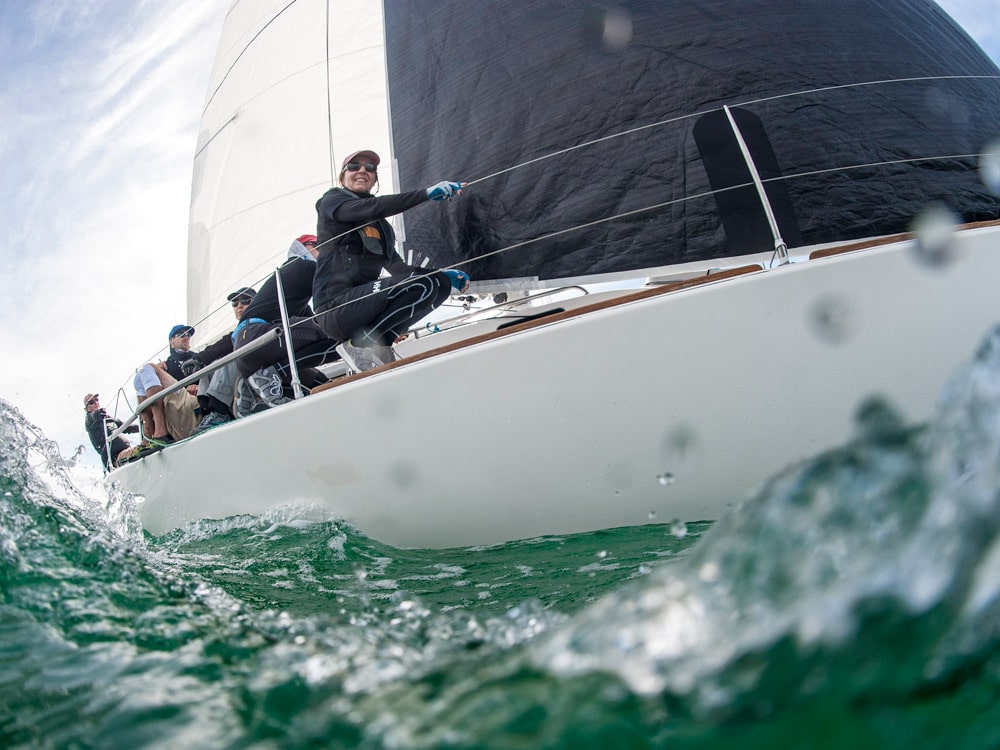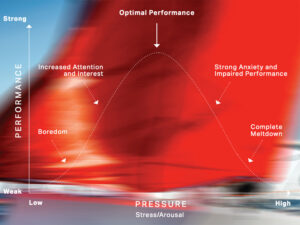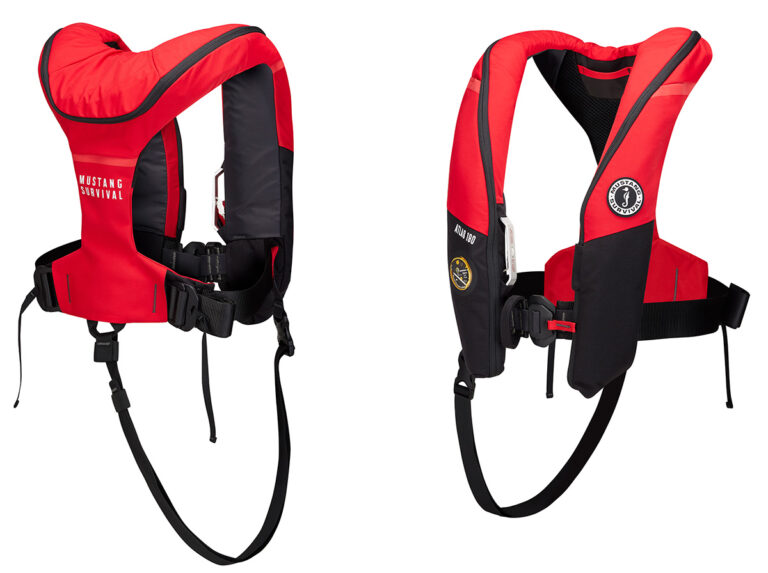
I stopped in at sailmaker Bill Fastiggi’s Vermont Sailing Partners loft a while back, and for some reason Bill and I started talking about what it takes to maintain a crew. It began when Bill eased back in his worn swivel chair, with one of the two loft dachshunds on his lap, and said, “I know a guy who won races all the time, but when he walked over to the end of the bar where his crew was, they picked up their beers and walked to the other end. Even though he does well, the guy has trouble finding crew.”
Like a tennis player returning a volley, I said, “Back when I was a kid, saw a Lightning skipper who was finishing in the back of the pack at a small local regatta. As he crossed the finish line, he was pummeling his middle crew on the back with the tail of his mainsheet.” Fortunately, the crew was wearing a lifejacket, and the blows were more humiliating that painful.
Fastiggi joked, “I bet he had some pirate blood in him.”
No doubt, the crew jumped ship the first chance he got.
Fastiggi then came back with a story about a crew on a big boat who was constantly berated for everything that went wrong, including not easing and tightening the mainsail cunningham correctly during tacks: “I mean, really? Of all the things that affect a tack, on most boats, the cunningham doesn’t even make the list.”
It was my turn, and as I was reminded of a crew who fought back against that sort of treatment. While they were leading on a downwind leg, she told her much older, top-level, abusive skipper, “If you don’t shut up, I’m going to take the spinnaker down.”
He didn’t say another word for the rest of the leg.
Then, Fastiggi served up an ace. “I knew a crew who became so fed up with the skipper’s abuse that she jumped out of the boat and started swimming ashore. She almost drowned, but was rescued by another boat. They threw him out of the event, and he was never seen at a regatta again.”
RELATED: How to Be a Better Crew
Neither of us could top that story—game, set, match—and a momentary lull fell over the conversation.
It was broken when the dachshund jumped off Fastiggi’s lap and went off barking at someone at the loft door. Fastiggi then dropped a deceptively simple rule on me that crystallizes what it takes to maintain a crew. “You know, it’s not really that difficult. You only need to do two of three things: treat them well on the water, treat them well ashore, and do well on the racecourse.”
“Come on,” I retorted. “There’s go to be more to it than that.”
“Nope. Just two of the three. Do all three, you’re absolutely guaranteed to keep them. Do two, and it’s very likely they’ll stick around. Do only one—or worse yet, none— they won’t come back.”
To start, he explained, “you’ve got to have a friendly, respectful environment on the boat. Sure, we don’t always succeed at that. Voices get raised when things go wrong, like in the middle of a broach, or when you vent after a bad tack. But you can overcome some of that if you take care of the details. For instance, part of your respect for them is reflected in how you maintain your boat. Nothing says ‘I could care less about your safety’ than a damaged lifeline. If they point out something that’s not right, fix it. It not only makes the boat run more smoothly but shows them you value and respect their input. And feed them well. Don’t bring the cheapest beer you can find. Unless someone requests PB&J sandwiches, try to do better than that.
After racing, buy your crew a beer, he suggests. “If you go out for pizza, spring for the tab. An extra $10 or $20 is a small price to pay for keeping your crew happy — and coming back. Be respectful of people’s time by asking them well ahead of events to crew with you. Don’t make them think they were an afterthought or that they were at the bottom of the crew list. If you can afford it, provide crew with gear and help out with travel expenses. It doesn’t take much.
He then shares a story of a local sailor named Skip who usually finished at the back end of the PHRF jib and main class. “He was super friendly to everyone — his competitors, his crew — and he gave pink hats to everyone who sailed with him,” says Fastiggi. “They wore those with pride. His crew kept coming back, year in and year out. If you look around, you’ll see quite a few Skips out there — people finishing back in the pack, but with regular crews because of the way they treat people ashore and on the boat.
“If you’re fortunate enough to sail with a really good sailor or team, it can be a great experience, even if they’re challenging to sail with. You may come out of the week saying, ‘Wow, this guy is an awesome sailor. I really learned a lot.’ Hopefully, the skipper makes up for this ashore. Once, when we were sailing a Florida Lightning regatta, during a race where we were really doing well, my crew Suzy suddenly said, ‘Oh look! Dolphins!’ Rather than commenting on how cool that was, I said, rather curtly, ‘Hey! Pay attention to the race. We’re not at Sea World.’ She thought I was a jerk at the time, but afterward, we had a good laugh about it over a few beers. Even today, when things get tense on our boat, Suzy will jokingly say, ‘Hey, we’re not at Sea World!”
Pretty easy, I thought as I late stepped out the loft door. Three things, do two of them well. It made sense to me. If only all aspects of life could be so simple.









